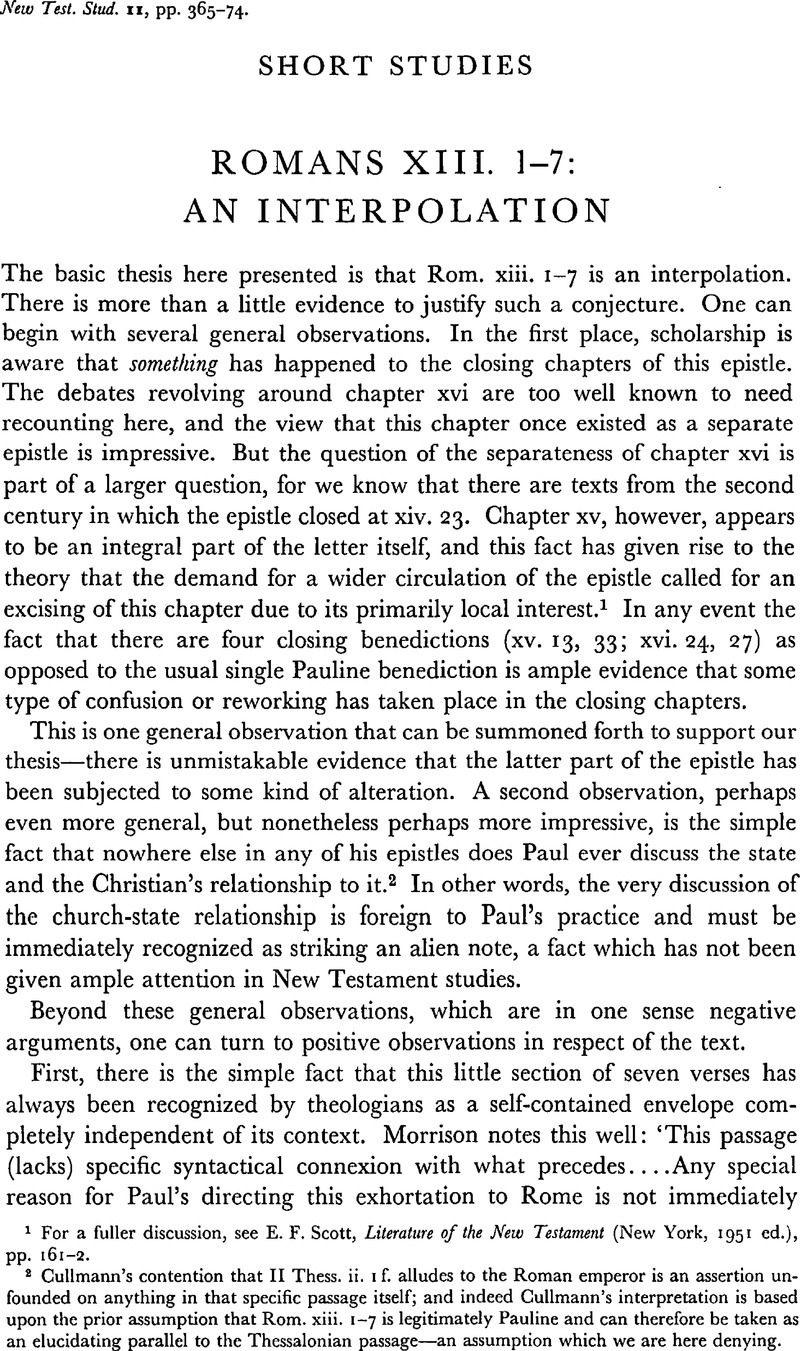Article contents
Romans xiii. 1–7: An Interpolation
Published online by Cambridge University Press: 05 February 2009
Abstract

Information
- Type
- Short Studies
- Information
- Copyright
- Copyright © Cambridge University Press 1965
References
page 365 note 1 For a fuller discussion, see Scott, E. F., Literature of the New Testament (New York, 1951 ed.), pp. 161–2.Google Scholar
page 365 note 2 Cullmann's contention that II Thess. ii. I f. alludes to the Roman emperor is an assertion unfounded on anything in that specific passage itself; and indeed Cullmann's interpretation is based upon the prior assumption that Rom. xiii. 1–7 is legitimately Pauline and can therefore be taken as an elucidating parallel to the Thessalonian passage—an assumption which we are here denying.Google Scholar
page 366 note 1 See Morrison, C. D., The Powers that Be (London, 1960), p. 104Google Scholar. In a footnote on the same page, Morrison quotes as additional evidence as to the lack of syntactical connexion, the parallel conclusions of such able scholars as Meyer, Zahn, and Godet.
page 366 note 2 See Barrett, C. K., The Epistle to the Romans (London, 1957), p. 244. Barrett, however, does not of course see the seven verses as an interpolation. However, full weight must be given to his two observations that (I) this is a self-contained treatment of a special theme not immediately related to what precedes or follows, and (2) this new theme is abruptly introduced with no organic literary connexion to its surroundings.Google Scholar
page 367 note 1 See Schweitzer, Albert, Mysticism of Paul the Apostle (London, 1953), p. 52.Google Scholar
page 367 note 2 See Deissmann, G. A., Paul (London, 1926), pp. 13–14.Google Scholar
page 368 note 1 Morrison, , op. cit. p. 42.Google Scholar
page 368 note 2 Ibid. p. 42.
page 368 note 3 Barrett, , op. cit. pp. 244–5.Google Scholar
page 369 note 1 See Dodd, C. H., The Epistle to the Romans (London, 1954), p. 202.Google Scholar
page 369 note 2 Ibid. p. 202.
page 369 note 3 See Klausner, J., From Jesus to Paul (London, 1939), p. 565.Google Scholar
page 370 note 1 Schweitzer, , op. cil. p. 316.Google Scholar
page 372 note 1 What is meant by the ‘eschatological-demonological assumptions of Jesus’ we have already developed at length in the monograph The Significance of the Synoptic Miracles (London, 1961).Google Scholar
- 8
- Cited by

